When it comes to anxiety attacks and panic attacks, many people use these terms interchangeably, not realizing that they refer to two different experiences. While they share a lot of symptoms—like a racing heart, difficulty breathing, and intense fear—the causes and treatments are distinct. Getting this right is important because how you approach managing anxiety versus panic can make a huge difference in your ability to cope.
Shared Symptoms of Anxiety and Panic Attacks
Both anxiety and panic attacks trigger the body’s fight-flight-freeze response, which produces a range of physical symptoms:
- Rapid heartbeat
- Shortness of breath or tightness in the chest
- Dizziness or lightheadedness
- Nausea or upset stomach
- Sweating, shaking, or chills
- Dry mouth
- Feeling detached or unreal
These overlapping sensations make it easy to confuse an anxiety attack with a panic attack, but their differences lie in how they start and how they feel.
Anxiety Attacks: A Gradual Build-Up
Anxiety attacks usually come in response to prolonged stress. Whether it’s work pressure, a looming exam, or ongoing family issues, anxiety builds slowly over time. You may feel the tension increasing for hours or even days before the anxiety reaches a point where it feels overwhelming. The attack itself tends to be less intense than a panic attack and typically lasts for less than 30 minutes.
Anxiety attacks usually come in anticipation of some event—work stress, family events, financial troubles—and the stress becomes overwhelming. While anxiety builds over hours or days, anxiety attacks usually last less than 30 minutes.
Unlike panic attacks, anxiety attacks don’t have a sudden onset. You may notice feelings of worry creeping in, accompanied by physical discomfort, but the process is gradual. The DSM-5 (the diagnostic manual for mental health professionals) doesn’t officially define anxiety attacks. Instead, anxiety is defined as a state of worry, fear, and physical discomfort, which eventually escalates into an attack.
Panic Attacks: Sudden and Intense
Panic attacks, on the other hand, feel like a balloon suddenly bursting. They come on quickly, often without warning, and reach their peak within 10 minutes. While about one in three people will experience a panic attack at some point in their life, it’s the intensity and rapid onset that set them apart from anxiety attacks.
There are two kinds of panic attacks: unexpected ones that seem to come out of nowhere, and expected ones triggered by specific fears or phobias. For example, someone afraid of snakes might experience a panic attack if they unexpectedly come across one. These panic attacks are usually intense but short-lived, often lasting less than 10 minutes.
Panic disorder comes into play when these attacks occur repeatedly and are accompanied by specific fears, such as the fear of losing control, having a heart attack, or passing out. Panic disorder can significantly impact your quality of life because the fear of future attacks adds another layer of anxiety.
What’s the Real Difference?

The key difference between anxiety and panic attacks lies in how they begin and how long they last. Anxiety attacks build slowly and come in response to prolonged stress, while panic attacks are sudden and more intense, with physical symptoms that are often more severe.
Anxiety attacks usually build over hours or days. Panic attacks, by contrast, are more like a balloon popping, which perfectly captures the suddenness and intensity of panic attacks. Panic disorder also involves repeated panic attacks, sometimes with specific symptoms like derealization (a feeling of detachment), a fear of a heart attack, or the fear of passing out.
It’s possible to experience both at the same time. Stress can build into an anxiety attack, which may then trigger a panic attack. For example, you might feel anxious about a work presentation, and as that anxiety builds, it could trigger a panic attack when you’re standing in front of the room, making the experience even more overwhelming.
Treatment Differences: Tailoring Your Approach

Although both anxiety and panic attacks can feel terrifying, the ways to treat them are different. Anxiety attacks, because they build gradually, can often be managed through techniques that help reduce stress over time. This includes things like:
- Breathing exercises
- Mindfulness and grounding techniques (such as the 3-3-3 rule, where you focus on three things you see, hear, and touch)
- Cognitive-behavioral therapy (CBT): One of the most effective treatments for anxiety and panic attacks.
- Exercise and healthy lifestyle changes: Reducing stimulants like caffeine, alcohol, or nicotine can have a positive impact.
An anxiety attack comes on gradually. This means the treatment is all about slowly lowering the level of the stress, like letting the water drain from an overflowing tub. Slowing down, calming your body, taking deep breaths, getting present, decreasing overall stress, and processing the stress that can’t be avoided are effective techniques. These help prevent both anxiety and panic attacks and can possibly help you calm down in the middle of an attack.
Panic attacks, however, need a different approach. In cases of recurring panic attacks, trying to calm yourself down during an attack can make things worse. Instead of forcing the panic to go away, accepting the fear and riding through it without trying to fight it can be much more effective. Trying to make panic attacks go away often fuels recurring panic attacks because panic attacks are anxiety about anxiety—fear of fear.
Instead of trying to force your body to calm down, which can actually intensify the feelings of panic, it’s important to let the experience pass naturally. Acknowledge that what you’re feeling is temporary and will subside on its own. Grounding techniques can help, but trying to stop the panic completely may feed the cycle of fear.
How to Handle a Panic Attack
Instead of trying to force your body to calm down, which can actually intensify the feelings of panic, it’s important to let the experience pass naturally. Acknowledge that what you’re feeling is temporary and will subside on its own. Grounding techniques can help, but trying to stop the panic completely may feed the cycle of fear.
This approach may seem counterintuitive, but acceptance has to come before change. By learning to accept the symptoms without fearing them, many people find that their panic attacks start to lose their power.
Final Thoughts
Both anxiety and panic attacks are real, and both are treatable. Knowing the difference can help you find the right tools to manage each one. While anxiety attacks often require long-term stress management strategies, panic attacks may respond better to learning how to “ride the wave” of fear without pushing it away.
Anxiety is like water gradually filling a bathtub, while panic is like the sudden burst of a balloon. Understanding this difference is the first step toward better managing both anxiety and panic, and ultimately reclaiming control of your life.





